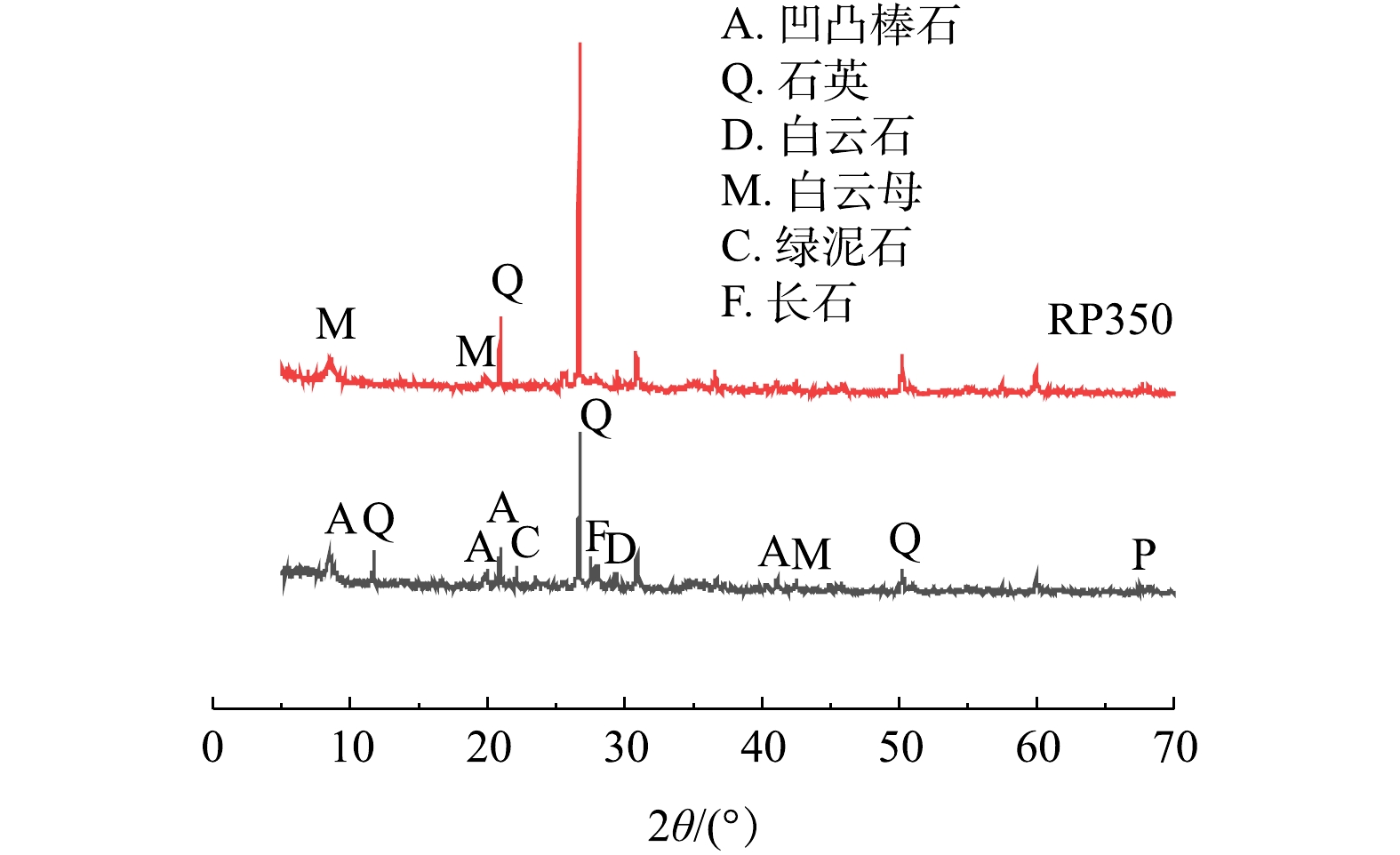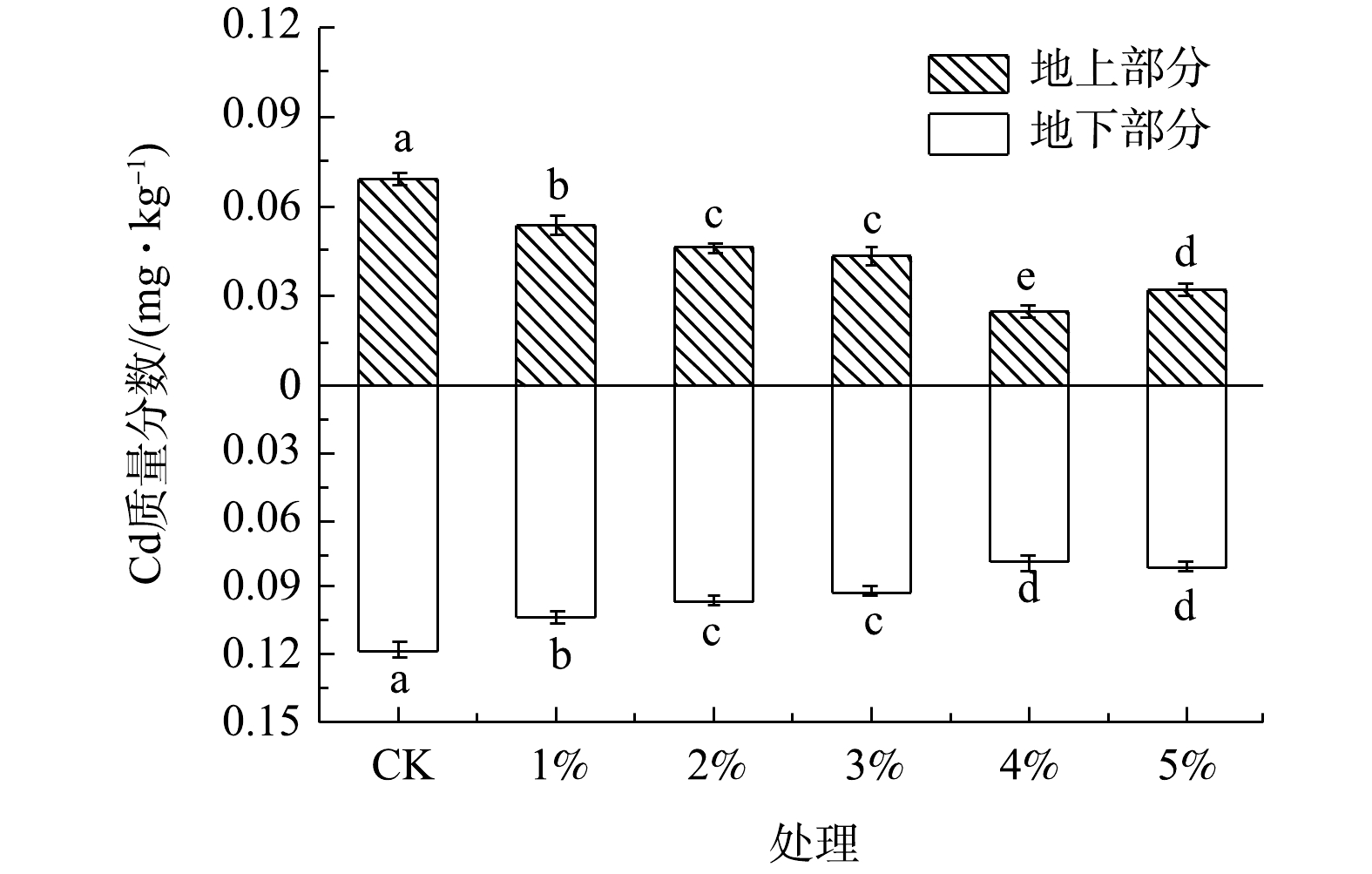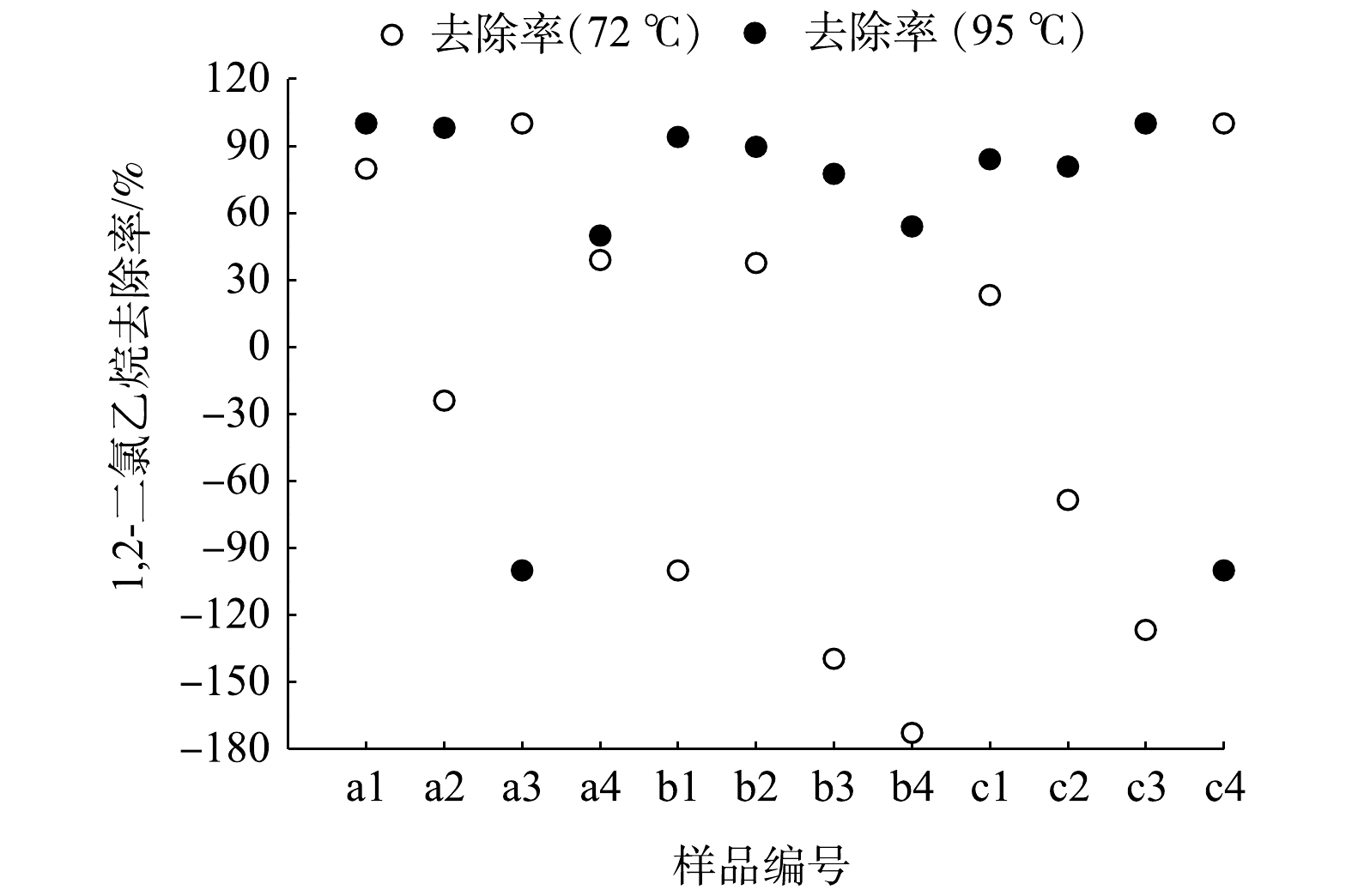-
氯代烃类化合物是一种重要的化工原料,常被应用于塑料制品、染料、润滑油、橡胶制品、农药、电子电器等产品的生产过程中。但该类化合物具有致癌、致畸、致突变的“三致”效应,可经生物体的呼吸道、消化道和皮肤为机体所吸收,造成机体的急、慢性中毒。近年来,我国大部分大中城市对重污染工业企业进行了关闭和搬迁,因此,产生了包括氯代烃污染在内的大量工业企业遗留场地,具有生态和环境风险,不适合作为正常建设开发用地亟需修复治理[1-2]。原位电阻热脱附(ISERH)是有机污染场地修复工程中常用的修复技术之一,是将电极插入土壤,以土壤为导体,通电将电能转换成热能,使土壤升温,将土壤中水分和污染物逐渐转化成气体并抽出系统外的一个过程[3]。ISERH可以处理挥发性有机化合物(volatile organic compounds, VOCs)、氯化挥发性有机化合物(chlorinated volatile organic compounds, CVOCs)、轻非水相液体(light non-aqueous phase liquid, LNAPL)、重非水相液体(dense non-aqueous phase liquid, DNAPL)和有机农药等污染[4-5]。
利用ISERH修复土壤时,主要通过2种机制将污染物从土壤和水中分离:一是产生的蒸汽驱使锁定在低渗透性的泥沙和粘土中的污染物离开土壤;二是蒸汽作为载气将污染物运输至抽提区域抽提。ISERH显著增加了污染物物理去除的速度和效率[6]。HEGELE等[7]的研究表明,水-三氯乙烯共沸产生的气体在低温区冷凝,当加热温度达到水的沸点时,能够促使气体从污染物存在的位置传输到抽提区,从而降低污染物气体在传输过程中被低温区捕获而在土壤中重新分配的可能。HAN等[8]研究了ERH修复PAH污染土壤的影响因素,结果表明,影响PAH去除效果的主要因素为水分和盐度。在我国,热脱附技术的研究主要以异位热脱附为主,针对原位热脱附技术的研究较少。已报道的异位热脱附技术研究结果表明,土壤粒径、温度和保温时间等对污染物的转化和脱附有较大影响,污染物含量对污染物去除没有明显影响,污染物的脱附效果与其沸点具有较大关联性[9-10]。蒋村等[11]研究了热传导原位热脱附技术对氯苯污染土壤修复影响因素,结果表明,当土壤设定温度为100 ℃时,90%土壤样品氯苯去除率达99%以上。土壤粒径、土壤含水率对土壤氯苯热脱附去除效果也有较大影响。
目前,针对ISERH技术的基础性研究的报道较少,对修复过程中基础参数、修复机理等了解不足,亦缺少对ISERH设备的研究。因此,本研究拟通过自主研发的ISERH设备,开展ISERH修复氯代烃污染土壤研究,分析热脱附过程中土壤温度变化及设定温度、加热时间、污染物种类、吸附时间等因素对污染物热脱附去除效果的影响及其作用机制,以期为ISERH技术基础研究和氯代烃污染场地修复工程设计提供参考。
全文HTML
-
供试土壤。土壤采自苏州某未污染地块黏土层洁净土壤,将土壤中碎石等杂物去除后自然风干,磨碎后过8目筛(孔径2 mm)备用。
模拟污染土壤的配制。向加热罐中加入100 kg土壤、30 kg纯水和一定量目标污染物1,2-二氯乙烷和氯苯;目标污染物理化性质如表1所示。保持土壤含水率为25%~30%,加盖密封老化,通过分批多次加入、边加入边搅拌的方式使污染物、水分和土壤尽量混匀。污染物在加入过程中会大量挥发,因此,热脱附实验前对各采样点位进行取样测定污染物含量,作为土壤污染物实际初始含量。
-
ISERH实验设备包括实时监控系统、加热系统、补水系统、抽提系统、分离系统、冷凝系统、活性炭吸附系统等。其中,加热系统包括电极、温度传感器、抽提管、加热罐,加热罐采用ppv材料制作,内径50 cm、高50 cm,1次可处理土壤约100 kg。电极U、V、W呈等边三角形分布,温度传感器T2设置在电极V和电极U连线中间,T1和T3等距离设置在电极V和电极U连线两侧,T1、T2、T3插入土壤深度分别为30、30、40 cm,用以监测不同位置和不同深度土壤温度。图1(a)为加热罐示意图。其中,T3为设备控制加热温度,当T3达到设定温度后,设备自动停止加热。
采样点位布设。兼顾不同温度区域,在电极连线中间及其两侧等间距布设3个采样点位,间距为5 cm。采样深度分别为5、20、35和45 cm,如图1(b)和图1(c)所示。样品编号分别为a1(b1、c1)、a2(b2、c2)、a3(b3、c3)、a4(b4、c4)。
-
1,2-二氯乙烷与水的共沸点(72 ℃)较氯苯与水的共沸点(90 ℃)低,故首先选择共沸点较低的1,2-二氯乙烷开展热脱附实验研究;然后,在1,2-二氯乙烷污染土壤热脱附研究的基础上开展氯苯污染土壤热脱附实验研究。
在土壤中加入1,2-二氯乙烷后,老化48 h[12]。利用ISERH设备对污染土壤和未污染土壤进行加热,记录加热过程中土壤温度和电阻的变化,检测分析加热前后土壤中硫酸根(
SO2−4 )、氯离子(Cl−)及土壤酸碱性的变化,用以分析1,2-二氯乙烷对土壤温度变化的影响及其影响机制。污染物热脱附去除效果影响因素。以1,2-二氯乙烷为目标污染物,初始含量为0~560 mg·kg−1,老化时间48 h,设定不同的加热温度(72、95 ℃)和不同的加热时间(12、24、36 h),加热过程中当尾气中浓度为零并持续1 h时,停止加热和抽提,约14 h后再次加热。加热时间12、24和36 h为累计有效加热时间。考察设定温度和加热时间对1,2-二氯乙烷热脱附去除效果的影响。
向浅层1,2-二氯乙烷含量为0~10.92 mg·kg−1、深层(深度≥35 cm)约为0 ~37.94 mg·kg−1的土壤加入氯苯,老化48 h。氯苯初始含量为238~1 239 mg·kg−1,设定温度为95 ℃,加热24 h,考察复合污染体系中污染物热脱附去除效果。
以氯苯为目标污染物,分别老化24和48 h,设定温度为95 ℃,加热24 h,考察老化时间对氯苯热脱附去除效果影响。
-
将土壤从加热罐中取出,立即用VOCs取样器在设定深度取2 g左右土壤放入装有饱和食盐水的顶空瓶中,迅速称量,密封。1,2-二氯乙烷和氯苯检测方法采用顶空/气相色谱-质谱法,仪器参数设置参考文献[11, 13],分析仪器主要为气相色谱仪(Agilent 7890B型,美国安捷伦科技公司)、质谱仪(Agilent 5977A型,美国安捷伦科技公司)。土壤阴离子检测:土壤阴离子提取参考文献中的方法[14-15]、检测方法采用离子色谱法,仪器参数设置参考文献[16],分析仪器主要为离子色谱仪(IC-1000型,美国赛默飞世尔科技有限公司)。
1.1. 供试土壤的处理
1.2. 实验装置
1.3. 实验方法
1.4. 分析方法
-
T2为2电极连线间的温度监测点,土壤通过电流直接加热而升温,此处温度最高,且受土壤理化性质影响最大,因此,以T2点监测到的温度为代表,分析土壤温度变化。从图2(a)可以看出,不含污染物土壤的温度呈直线升高,而污染土壤升温速度呈先快后慢趋势,温度变化符合ExpAssoc方程拟合结果,R2分别为0.996和0.976。
由图2(b)可以看出,在热脱附过程中,污染土壤电阻较未受污染土壤低。张辉等[17]的研究结果表明,在土壤中加入有机污染物后,土壤电阻增大,而本研究结果却与之相反。这可能是因为,本研究中对土壤进行了加热,在加热过程中土壤和污染物理化性质发生了变化,从而导致土壤电阻减小。对热脱附前后土壤中主要阴离子
SO2−4 和Cl−检测后发现,未污染土壤加热后SO2−4 和Cl−含量分别提高了10.92和2.79 mg·kg−,污染土壤加热后SO2−4 和Cl−含量分别提高了121.92和49.82 mg·kg−1。BEYKE等[18]的研究结果表明,氯代烃类污染物在热脱附过程中会发生脱氯分解反应。在本研究中,污染土壤热脱附后土壤pH由7.5~7.8降低为6.8~6.9;同时,实验过程中发现电极经常发生腐蚀,这证实了热脱附过程中有酸性物质或腐蚀性气体产生。因此,污染土壤热脱附前后SO2−4 和Cl−增加现象可能有2方面原因:一是通过ISERH对土壤加热,导致土壤中离子释放出来[19];二是1,2-二氯乙烷在热脱附过程中发生脱氯分解[18],导致土壤偏酸性,并进一步促进了土壤中离子的释放。土壤中自由离子含量升高,提高了土壤导电性能,使土壤升温速度变快。随着加热时间的增加,土壤温度逐渐升高,而含污染物土壤在相对较低温度即沸腾并产生大量气体,导致热量散失增加,进而导致后期土壤升温速度逐渐降低,直至达到设定温度后升温速度变为0。 -
由图3可以看出,设定热脱附温度为72 ℃时,50%土壤样品中1,2-二氯乙烷去除率为正值,含量较修复前降低;50%土壤样品中1,2-二氯乙烷去除率为负值,含量较修复前增加。这是因为,虽然1,2-二氯乙烷与的水理论共沸点为72 ℃,但在实际加热过程中,当温度达到72 ℃时,土壤、水和1,2-二氯乙烷3者组成的体系并未共沸,冷凝系统中未见大量冷凝水,尾气中也未监测到高浓度污染物。这说明,大分部污染物未转化成气体被抽提去除,而是在水分、水蒸气等因素影响下在土壤中发生了迁移和重新分配。这亦说明在该工艺条件下,电阻热脱附技术对土壤修复效果不佳,需提高设定温度。因此,在实际修复工程中,设定温度应高于污染物与水的共沸点。
当设定热脱附温度为95 ℃时,土壤中1,2-二氯乙烷的去除效果明显改善,80%土壤样品中的1,2-二氯乙烷去除率达50%~100%,且浅层土壤污染物含量下降较深层土壤更明显。这说明ISERH技术对浅层土壤修复效果优于深层土壤。因此,在实际ISERH修复项目以及修复效果评估时,应重点关注深层土壤修复效果。
-
图4为设定热脱附温度为95 ℃,加热12、24和36 h后,土壤中1,2-二氯乙烷热脱附去除效果。a3和c4初始含量为0,去除率为负数,此处不作a3和c4去除率分析。由图4可以看出,随着加热时间的延长,1,2-二氯乙烷去除率逐渐提高。加热36 h后,浅层土壤样品a1、a2、b1、b2、c1、c2污染物去除效率为94.29%~100%;深层土壤a4、b3、b4和c3去除率为78.29%~85.92%。
在热脱附实验过程中发现,尾气中污染物含量为0后,取土样检测,结果显示土壤中仍含有大量污染物。停止加热和抽提一段时间(约14 h)后再次加热,尾气中又有较高浓度污染物。这可能是因为,持续加热和抽提一段时间后,土壤中易去除的污染物逐渐挥发被抽提出去,但仍有大量污染物位于土壤深处未被去除;此时,尾气中污染物含量很低,能耗主要用于水分的蒸发和抽提;停止加热和抽提后,土壤污染物缓慢迁移扩散,由高含量区域向低含量区域扩散,从土壤向水相和气相转移;在下一次加热过程中,又有大量污染物被抽提出去,使得尾气中污染物含量升高,土壤污染物含量进一步降低。这说明,在热脱附过程中,尾气中污染物含量为0时,土壤中污染物含量有可能仍然很高。采用间歇加热和抽提的方式,可提高ISERH技术能耗有效利用率。
-
复合污染体系氯苯去除率和单一污染体系1,2-二氯乙烷的去除效率如表2所示。浅层土壤1,2-二氯乙烷和氯苯去除率分别为97.72%~100%和89.87%~96.75%,深层去除率分别为33.63%~90.12%和75.77%~78.95%。单一污染体系浅层土壤1,2-二氯乙烷去除率和复合污染体系浅层土壤氯苯去除率均较深层土壤高,这与2.2节报告的实验结果一致,浅层土壤ISERH修复效果优于深层土壤。
对比单一污染体系1,2-二氯乙烷去除率和复合污染体系氯苯去除率可以看出,复合污染体系中1,2-二氯乙烷初始含量为0的土壤样品,氯苯去除率(78.95%~96.69%)均较单一污染体系1,2-二氯乙烷去除率(90.12%~100%)低。这是因为,相较于氯苯,1,2-二氯乙烷辛醇-水分配系数比小、挥发性强、沸点低,更容易从土壤中热脱附去除。在复合污染体系中,预先存在1.2-二氯乙烷的土壤样品,氯苯去除率(75.77%~76.95%)较单一污染体系1,2-二氯乙烷去除率(33.63%~66.66%)高。其主要原因是,首先存在的1,2-二氯乙烷占据了土壤中高能量的吸附点位,而后加入的氯苯只能吸附在低能量的吸附点位[20],故其与土壤颗粒间的吸附作用较弱,IESRH过程中更容易被去除。这说明,土壤中氯代烃ISERH去除效率与污染物性质和土壤吸附作用有关。复合污染土壤中先期加入的少量1,2-二氯乙烷,促进了后加入的氯苯的热脱附去除。
-
图5为老化24和48 h土壤中氯苯的去除率。可以看出,老化24 h的污染土壤,经ISERH处理后,深层土壤和浅层土壤均得到了较好修复,氯苯含量为0~114 mg·kg−1,平均45 mg·kg−1,去除率均在92%以上,平均去除率为96.22%。老化48 h的土壤,氯苯去除率较老化24 h的土壤低,土壤修复后氯苯含量为26~164 mg·kg−1,平均87 mg·kg−1,去除率为75%~96%,平均去除率为86.92%。老化24 h的土壤氯苯去除效率较老化48 h的土壤约高10%,这说明老化时间对氯苯去除效果有明显影响。这是因为,土壤中含有有机质、矿物质、水分等成分,他们对有机物均具有吸附作用[21-22],且随着老化(吸附)时间的延长,污染物与土壤之间的吸附作用更加“牢靠”[20],解吸就更加困难。因此,污染物在土壤中的老化时间越长,土壤原位热脱附修复难度越大,污染去除效果越差。
2.1. 加入1,2-二氯乙烷对土壤温度变化的影响
2.2. 设定温度对1,2-二氯乙烷热脱附去除效果的影响
2.3. 热脱附加热时间对1,2-二氯乙烷热脱附去除效果的影响
2.4. 不同污染体系中氯苯和1,2-二氯乙烷的去除率
2.5. 老化时间对1,2-二氯乙烷热脱附去除效果的影响
-
1)在氯代烃污染土壤ISERH修复过程中,土壤
SO2−4 和Cl−含量升高,土壤电阻降低,土壤升温速度呈先快后慢的趋势。2)当设定温度为72 ℃时,1,2-二氯乙烷发生了迁移和重新分配,并未被有效去除;提高设定温度至95 ℃、延长加热时间至36 h,则1,2-二氯乙烷去除率为78.29%~100%。在修复效果上,浅层土壤修复效果优于深层土壤;在能量利用率上,间歇加热模式的抽提效果优于连续加热模式下的抽提效果。
3)污染物性质和污染物与土壤间吸附作用是影响热脱附效果的主要因素。单一污染土壤的1,2-二氯乙烷去除率高于氯苯;在先加入1,2-二氯乙烷后再加入氯苯的复合污染土壤中,氯苯去除率高于1,2-二氯乙烷去除率。老化时间越长,导致土壤对污染物的吸附越牢固,进而使污染物热脱附去除效果越差。






 下载:
下载:














